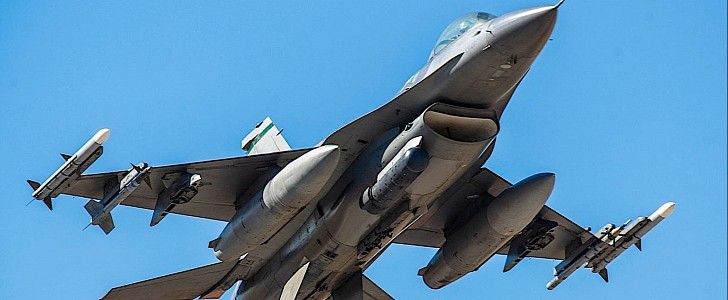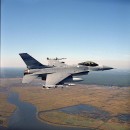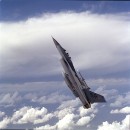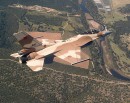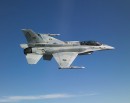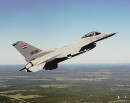The F-16 Fighting Falcon has been around for almost half a century, and it still flies in large numbers in the skies of the world thanks to the constant upgrades it benefitted from. Most of these upgrades are targeted at avionics and weapons, but there are times when the military has to look at rather small, but important bits of the airplane’s design.
That’s exactly what the Air Force Research Laboratory is doing, as it selected defense contractor Collins Aerospace to come up with a new ventral fin for the fighter jet. The award will have Collins design and produce a prototype of the fin using thermoplastic technology.
The ventral fin (meaning the one located on the belly of the airplane) is designed to prevent yaw, which can be caused by the fact that at times, during high angles of attack, the body of the plane shields a lot of the vertical stabilizer. For stability, the F-16 has two of them, and they're made from bonded aluminum and graphite epoxy.
In the case of the Collins fins, they'll be made with thermoplastic resin. That would be a material that can be shaped through a special welding technique to become lighter, cheaper, and much easier to store than current parts.
As per Collins, the use of this material and welding tech should allow for a reduction in cost of about 30 percent when compared to current parts made with thermosetting plastics.
The resulting product should also be a lot tougher than existing ones, capable of withstanding high impacts and high loads. It should also be thinner and easier to store, as it does not need cold storage for raw materials as thermoset does.
At the time of writing, it’s not clear how many of the existing F-16s could get the new part, or when. Collins should be done with the prototype in about three years.
The ventral fin (meaning the one located on the belly of the airplane) is designed to prevent yaw, which can be caused by the fact that at times, during high angles of attack, the body of the plane shields a lot of the vertical stabilizer. For stability, the F-16 has two of them, and they're made from bonded aluminum and graphite epoxy.
In the case of the Collins fins, they'll be made with thermoplastic resin. That would be a material that can be shaped through a special welding technique to become lighter, cheaper, and much easier to store than current parts.
As per Collins, the use of this material and welding tech should allow for a reduction in cost of about 30 percent when compared to current parts made with thermosetting plastics.
The resulting product should also be a lot tougher than existing ones, capable of withstanding high impacts and high loads. It should also be thinner and easier to store, as it does not need cold storage for raw materials as thermoset does.
At the time of writing, it’s not clear how many of the existing F-16s could get the new part, or when. Collins should be done with the prototype in about three years.
